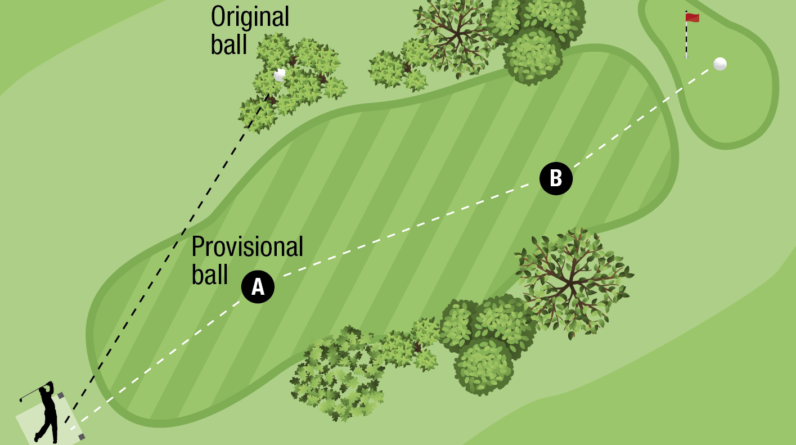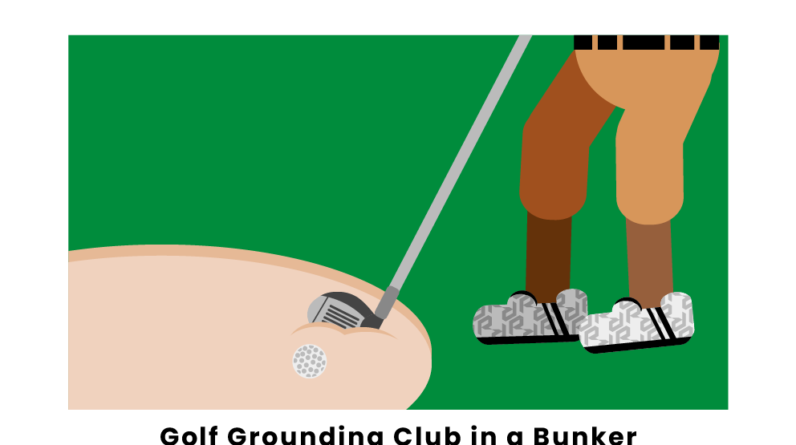Imagine you’re standing on the tee box, gazing down the fairway, and you see a sharp dogleg to the left. You may be wondering, “How should I approach a dogleg on the course?” Well, fear not, because in this article, we will provide you with some valuable tips and strategies that will help you navigate these tricky turns like a pro. With a little knowledge and some careful planning, you’ll soon be conquering those doglegs with confidence and precision. So, let’s dive right in and explore the secrets to conquering those challenging doglegs on the golf course!

1. Understand the Concept of a Dogleg
A dogleg on a golf course refers to a hole that features a sharp turn or bend, typically in the fairway. This deviation from a straight path can pose various challenges for golfers as it requires careful consideration and strategic planning. Understanding the concept of a dogleg is crucial for successfully navigating these holes.
Characteristics of a dogleg hole can vary greatly, depending on the course design and the specific hole in question. Some doglegs may bend to the right, known as a right dogleg, while others may bend to the left, known as a left dogleg. The severity of the bend can also differ, with some doglegs featuring a gentle curve and others presenting a more dramatic turn. These variations add to the complexity and excitement of playing dogleg holes.
The importance of understanding doglegs cannot be overstated. By comprehending the layout and characteristics of doglegs, golfers can strategically plan their shots, select the appropriate clubs, and navigate potential hazards effectively. Failing to understand doglegs can lead to poor course management, unnecessary risks, and higher scores. Therefore, developing a solid understanding of doglegs is essential for any golfer looking to improve their game.
2. Assess the Shape and Angle of the Dogleg
To approach a dogleg hole successfully, the first step is to assess its shape and angle accurately. By doing so, you can determine how the hole will likely play, which can help inform your club selection and shot strategy.
Identifying whether a dogleg is a right or left dogleg is crucial. This information allows you to anticipate the direction in which your shot needs to curve to stay on the fairway. Observing the fairway’s shape, the position of trees, and any course markings can provide visual cues to identify the dogleg’s direction.
Determining the angle of the dogleg is equally important. Understanding the degree of the turn can help you decide how aggressively or conservatively you should play your shot. A more acute angle may require a shorter and more precise shot, while a wider angle might allow for a longer and more aggressive play.
Visual cues such as the fairway markings, trees, or cart paths can provide valuable insights into the dogleg’s angle. Observing these cues carefully and taking note of any course-specific information can help you make an informed decision about how to approach the hole.
3. Club Selection
Once you have assessed the shape and angle of the dogleg, it’s time to consider your club selection. Several factors come into play when deciding which club to use on a dogleg hole.
The first consideration should be the distance and shot requirements of the hole. Assess the length of the hole and determine the shot you need to hit to position yourself favorably for the next shot. Understanding the distance and required shot shape will help narrow down your club options.
Secondly, it is essential to consider potential hazards and landing areas. Dogleg holes often feature hazards such as bunkers, water bodies, or trees positioned strategically along the fairway. Taking note of these hazards and deciding how to best avoid or navigate them will help inform your club selection. Consider selecting a club that ensures you have sufficient distance to clear hazards while still keeping you in the playing area.
Lastly, examine the landing areas on the fairway and green. Identifying the optimal landing area will allow you to select a club that maximizes your chances of hitting your target and setting up a favorable position for your next shot.
By carefully considering these factors and making an informed club selection, you can set yourself up for a successful approach to the dogleg hole.
4. Course Management Strategy
Having a well-thought-out course management strategy is crucial when approaching a dogleg hole. This strategy involves pre-shot planning, analyzing risk-reward scenarios, and deciding whether to take an aggressive or conservative approach.
Before hitting your shot, take the time to analyze the hole and develop a plan. Consider the potential risk-reward scenarios of your shot options. In some cases, it may be worth taking a more aggressive approach, attempting a longer shot to position yourself closer to the green. However, this approach comes with a higher level of risk, as it may involve navigating more hazards or narrower landing areas. Alternatively, a conservative approach may involve hitting a shorter shot that guarantees staying on the fairway but may result in a longer subsequent shot.
Deciding on an aggressive or conservative approach ultimately depends on your confidence, skill level, and the specific circumstances of the hole. Reflect on your strengths as a golfer and assess the potential benefits and drawbacks of each approach to make an informed decision.

5. Aim Point and Alignment
To successfully navigate a dogleg hole, selecting a suitable aim point and aligning yourself correctly are crucial.
When selecting an aim point, consider the desired shot shape and the bend of the dogleg. If the hole bends to the right, aiming closer to the left side of the fairway can allow for a more favorable shot shape, helping the ball curve back towards the target. Conversely, if the hole bends to the left, aiming towards the right side of the fairway can achieve a similar desired shot shape. Adjusting your aim point based on the dogleg’s direction can help increase your chances of hitting the fairway or setting up a favorable angle for your next shot.
Aligning yourself properly to the desired shot shape is equally important. Take note of your natural shot tendencies and adjust your alignment accordingly. If you tend to hit a fade, aligning slightly to the left of the target can help compensate for the ball’s natural curvature. Similarly, if you tend to hit a draw, aligning slightly to the right of the target can produce the desired shot shape.
For angled doglegs, where the fairway bends and the target is not visible from the tee, it is crucial to adjust your shot alignment. Aligning yourself slightly towards the inside of the dogleg can help account for the bend and increase your chances of hitting the fairway.
6. Shot Shaping Techniques
Understanding shot shaping options is key to successfully navigating doglegs. Shot shaping techniques refer to intentionally curving the ball’s flight either left or right to navigate around obstacles and position yourself favorably for subsequent shots.
To execute a fade, a shot that curves gently from left to right for a right-handed golfer (opposite for left-handed golfers), grip the club slightly weaker, ensuring your hands are rotated towards the left. Focus on an outside-to-in swing path and aim left of the target to encourage the desired left-to-right shot shape.
Conversely, to execute a draw, a shot that curves gently from right to left for a right-handed golfer (opposite for left-handed golfers), grip the club slightly stronger, ensuring your hands are rotated towards the right. Concentrate on an inside-to-out swing path and aim right of the target to encourage the desired right-to-left shot shape.
Practicing shot shaping techniques during practice rounds can help you gain control over your ball flight and increase your confidence when faced with dogleg holes on the course.

7. Utilizing Course Topography and Hazards
Strategic use of course topography can be advantageous when navigating dogleg holes. By understanding the layout of the course and taking advantage of natural features, golfers can position themselves favorably for subsequent shots.
Identify any natural slopes or undulations on the fairway that can influence the ball’s movement. For instance, during the approach shot, aiming to land the ball slightly uphill can help control the roll and prevent the ball from running off the fairway. Similarly, aiming to land the ball downhill can generate additional distance but also increase the roll.
While utilizing course topography can work to your advantage, it is equally crucial to be mindful of potential hazards. Avoiding or navigating hazards strategically is essential for a successful approach to a dogleg hole. Consider the location and positioning of bunkers, water bodies, or trees, and factor them into your shot strategy.
By considering the risk-reward options presented by the course layout and strategically navigating hazards, you can optimize your chances of a successful approach to the dogleg.
8. Playing for Position
Playing for position is an essential aspect of successfully navigating a dogleg hole. This involves calculating ideal landing points for subsequent shots, ensuring appropriate distance control, and understanding the course layout to maximize advantages.
Before hitting your shot, assess the ideal landing points for setting up the next shot. Analyze the distance remaining to the green and consider any potential obstacles or hazards that may affect your shot. By strategically landing the ball at a specific distance or location, you can improve the overall playability of the hole.
Controlling the distance of your shots is also crucial when playing for position. Consider adjusting your swing speed and club selection to ensure your shots cover the desired distance accurately. This precision allows you to set up your next shot at an optimal distance for your capabilities and desired approach to the green.
Understanding the course layout is key to playing for position effectively. By studying the hole’s layout and identifying any advantages, such as wider landing areas or placement of hazards, you can position yourself favorably for a successful approach to the dogleg hole.

9. Adapting to Changing Conditions
Adaptability is essential when approaching a dogleg hole, as conditions can change during a round of golf. Factors such as wind speed and direction, as well as weather conditions, can significantly impact the strategies employed on dogleg holes.
When faced with windy conditions, adjust your strategy accordingly. Consider how the wind will affect your shot shape and distance. A strong headwind may require a more aggressive tee shot to reach the desired landing area, while a tailwind may allow for a more conservative approach. Additionally, be prepared to adjust your shot alignment to compensate for any crosswinds that may affect the ball’s flight.
Another influential factor in adapting to changing conditions is the positioning of the tee and pin. Tee positions that are further back can lengthen the hole, potentially altering your club selection and shot strategy on dogleg holes. Similarly, the location of the pin on the green can impact your approach shot, particularly if it is tucked close to a hazard or positioned on a slope.
Modifying your approach to doglegs based on course setup and changing conditions demonstrates adaptability and can help optimize your chances of success.
10. Practice and Experience
As with any aspect of golf, practice and gaining experience with doglegs are crucial for improving your approach to these challenging holes. Replicating dogleg situations during practice rounds allows you to become more familiar with different shot shapes, club selections, and course management strategies.
During practice, focus on intentionally shaping your shots to navigate imaginary doglegs and simulate the challenges presented by real dogleg holes. Experiment with different clubs, shot shapes, and strategies to develop a comprehensive understanding of how to approach these holes effectively.
Additionally, reflecting on previous rounds where you encountered doglegs can provide valuable insights for future approaches. Pay attention to the decisions you made, the outcomes of your shots, and the overall success of your approach. This reflective process can help identify areas for improvement and inform adjustments to your strategies moving forward.
In conclusion, approaching a dogleg hole successfully requires a combination of knowledge, skill, and strategic decision-making. By understanding the concept of a dogleg, assessing the shape and angle, making informed club selections, developing a course management strategy, and practicing shot shaping techniques, you can navigate these challenging holes with confidence. Adaptability, utilizing course topography, and gaining experience through practice and reflection are also key components of successfully playing dogleg holes. So the next time you find yourself faced with a dogleg on the course, tackle it with a comprehensive approach and watch your game improve.







